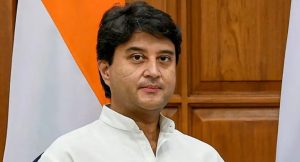It’s never a dull moment in hospitals across India and with Covid-19 infections rising across the country, hospitals are seeing a rise in footfalls in the outpatient departments (OPDs). India’s coronavirus burden is rising on a daily basis with many patients rushing to the hospital, fearing the worst.
Several states in India are recording a spike in coronavirus infections — on Monday (June 2), India’s active Covid-19 cases stand at 3,961 with 203 new cases being added only on Sunday. That’s not it; the country is also recording a rise in Covid-related deaths — four have been reported since Sunday.
So, what’s going on? How bad is the situation?
India’s Covid burden keeps rising
As of Monday (June 2), the country’s active Covid cases are 3,961 — more than a 15-fold increase in just 10 days, according to the data from the Ministry of Health and Family Welfare. Health authorities attribute the rapid increase to the emergence of new, more transmissible Omicron sub-variants, specifically NB.1.8.1 and NF.7 , predominantly affecting southern and western India.
Data shows that the most cases have been detected in Kerala — 1,435 cases — whereas Maharashtra comes in second with 506 Covid cases. Delhi with 483 infections comes in third while Gujarat recorded 338 cases, coming in fourth. West Bengal (331), Karnataka (253), Tamil Nadu (189) and Uttar Pradesh (157) are the other states where Covid infections are being recorded in high numbers.
Along with the rising infections, Covid deaths are also being reported in the country. Four deaths — one each in Delhi, Kerala, Maharashtra, and Tamil Nadu have been reported across the country in the past 24 hours.
Indian Council of Medical Research (ICMR) Director General Dr Rajiv Bahl was quoted as telling the media that the rise in cases began in southern states, followed by western and now northern regions. The ICMR is closely monitoring the situation through the Integrated Disease Surveillance Programme (IDSP), he said.
He further added, “The variants we have sequenced from South and West India are not much severe. Four variants have been discovered — LF.7 series, XFG series, JN.1 series and NB.1.8.1 series in the same order. We are sequencing the samples from other areas to check for more new variants… The cases are not very severe and people should not worry, but only stay vigilant.”
OPD admissions in hospitals increase
And as a result of the increasing Covid cases, patient footfall at OPDs is rising by at least three to four times. Dr Pradeep Bajad, senior consultant, pulmonary, critical care, and sleep medicine at Faridabad-based Amrita Hospital, told News18, “At present, we are not seeing a surge in ICU admissions due to Covid-19 directly. However, we are witnessing a marked increase in OPD footfall, with patient visits increasing by nearly three to four times in the past 10 days.”
Dr Suranjit Chatterjee, senior consultant, internal medicine at Indraprastha Apollo Hospitals, also noted a rise in patients visiting the OPD. He also stated that most of those who are visiting the OPD are complaining of fever, sore throat, and upper respiratory symptoms, which he calls routine and manageable.
Dr Arup Halder, consultant pulmonologist at CMRI Hospital, Kolkata, also said that there was a significant rise in OPD consultations. People with fever and cold-like symptoms are walking in to get themselves checked out, he was quoted as saying.
The rising infections have also got hospital authorities on high alert; they are ramping up preventive measures such as increased Covid testing and preparation of hospital beds. In fact, many hospitals across the country are preparing isolation wards amid the Covid spike. For instance, in Haryana, officials have been asked to ensure hospitals establish dedicated flu corners and maintain adequate isolation beds, oxygen supplies, PPE kits, N95 masks, antibiotics, and testing kits.
At the Postgraduate Institute of Medical Education and Research (PGIMER) in Chandigarh, special wards for Covid-19 patients, including ICU beds and high-dependency units, have been activated. A similar picture is prevalent in Karnataka wherein hospitals are preparing bigger and better isolation wards.
Covid symptoms to watch out for
Doctors note that most of the patients being diagnosed with Covid have the usual symptoms — fever, sore throat, cough, cold, headache, body ache and fatigue. However, this time there’s one specific symptom that could help patients discern if they are infected and that’s having diarrhoea, especially watery diarrhoea.
“Many are coming in with diarrhoea. Painless, watery stools for a day or two followed by severe lethargy or fatigue. Lethargy can persist for weeks post-discharge from the hospital. So, any patient who presents with unexplained diarrhoea, check for Covid-19,” Dr Chatterjee was quoted as telling News18.
Doctors note that this change may be due to the virus’s altered behaviour in the body or its interaction with the gut’s immune system.
Dr Charudatt Vaity, director of critical care at Fortis Hospital Mulund, also noted that an increasing number of patients with runny diarrhoea were testing positive for Covid.
Doctors calls for extra vigilance
But despite the rise in cases, doctors are of the opinion that the situation is still under control and that there is no need to panic. However, medical experts have called for an increase in vigilance. Dr Sanjay Jain, dean research, PGIMER, said, “Most new variant cases are mild, but vigilance is essential, especially to protect the vulnerable.”
Even Union Minister of State for Health and AYUSH (Independent Charge), Prataprao Jadhav, assured that the Centre is fully prepared to handle any situation that may arise. “Both our Central Health Department and the AYUSH Ministry are fully alert and closely monitoring the situation across all states. We have spoken with the respective Health and AYUSH Secretaries, as well as other concerned ministers,” Jadhav was quoted as telling news agency ANI.
Soumya Swaminathan , former chief scientist at the World Health Organisation (WHO), also echoed similar sentiments. She has urged the public to stay cautious but not to panic. Speaking to News18, she said that the current trends do not indicate a return to the devastating waves of 2020 or 2021.
“Covid or SARS-CoV-2, which is the virus, is another respiratory virus, like the many others that are circulating amongst us human beings in the world today. It has been around for five years now. It’s, of course, constantly mutating and changing, like other viruses,” she said.
She further added, “What you’re seeing now is a mild disease mostly. Even though people are testing and reporting positivity, you find that hospitalisations are rare.” FIRSTPOST









